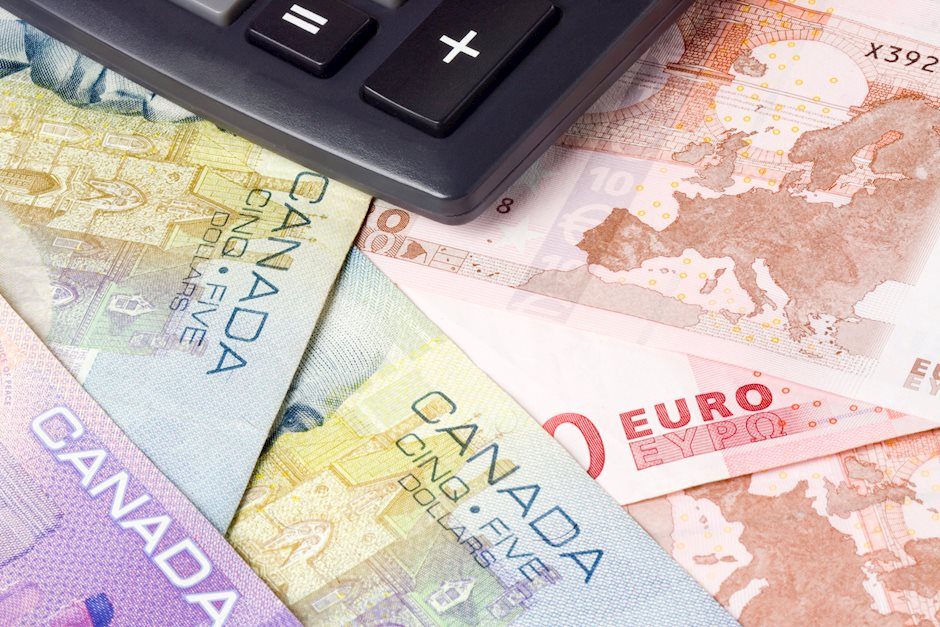EUR/CAD rallies above 1.4800 as US Trump threatens higher tariffs on Canada
- EUR/CAD surges above 1.4800 as Trump warns of higher tariffs on Canada and Mexico.
- Fears of higher tariffs on Canada has weakened the Loonie.
- ECB officials shift focus to economic risks than taming price pressures.

The EUR/CAD pair soars to near 1.4830 in European trading hours on Tuesday. The cross strengthens as the Canadian Dollar (CAD) weakens after United States (US) President-elect Donald Trump threatens to raise import tariffs by 25% on Canada and Mexico.
Trump said in a post on Truth.social that China has poured illicit drugs into the US, mainly through Mexico. Trump added that he will impose an additional 10% on China, which will be over 60% that he mentioned in his election campaign.
The announcement of higher tariffs on Canada has weakened the CAD across the board. Canada is one of leading trading partner of the US and higher-level tariff on the nation will dampen its export sector.
Though investors have underpinned the Euro (EUR) against the Canadian Dollar, its performance against other major peers has remained weak as the Eurozone is also expected be the victim of higher tariffs by Trump. In the election campaign, Tump said that the bloc will pay to pay a price for not buying enough American goods.
The economic situation of the shared continent is already vulnerable, which has forced European Central Bank (ECB) officials to focus more on preserving economic growth than bringing inflation under control. ECB Vice President Luis de Guindos said on Tuesday, ”Concerns about high inflation have shifted to economic growth.” Guindos added, “Potential changes in US trade policy will only add to the uncertainty.”
Canadian Dollar FAQs
The key factors driving the Canadian Dollar (CAD) are the level of interest rates set by the Bank of Canada (BoC), the price of Oil, Canada’s largest export, the health of its economy, inflation and the Trade Balance, which is the difference between the value of Canada’s exports versus its imports. Other factors include market sentiment – whether investors are taking on more risky assets (risk-on) or seeking safe-havens (risk-off) – with risk-on being CAD-positive. As its largest trading partner, the health of the US economy is also a key factor influencing the Canadian Dollar.
The Bank of Canada (BoC) has a significant influence on the Canadian Dollar by setting the level of interest rates that banks can lend to one another. This influences the level of interest rates for everyone. The main goal of the BoC is to maintain inflation at 1-3% by adjusting interest rates up or down. Relatively higher interest rates tend to be positive for the CAD. The Bank of Canada can also use quantitative easing and tightening to influence credit conditions, with the former CAD-negative and the latter CAD-positive.
The price of Oil is a key factor impacting the value of the Canadian Dollar. Petroleum is Canada’s biggest export, so Oil price tends to have an immediate impact on the CAD value. Generally, if Oil price rises CAD also goes up, as aggregate demand for the currency increases. The opposite is the case if the price of Oil falls. Higher Oil prices also tend to result in a greater likelihood of a positive Trade Balance, which is also supportive of the CAD.
While inflation had always traditionally been thought of as a negative factor for a currency since it lowers the value of money, the opposite has actually been the case in modern times with the relaxation of cross-border capital controls. Higher inflation tends to lead central banks to put up interest rates which attracts more capital inflows from global investors seeking a lucrative place to keep their money. This increases demand for the local currency, which in Canada’s case is the Canadian Dollar.
Macroeconomic data releases gauge the health of the economy and can have an impact on the Canadian Dollar. Indicators such as GDP, Manufacturing and Services PMIs, employment, and consumer sentiment surveys can all influence the direction of the CAD. A strong economy is good for the Canadian Dollar. Not only does it attract more foreign investment but it may encourage the Bank of Canada to put up interest rates, leading to a stronger currency. If economic data is weak, however, the CAD is likely to fall.
Author

Sagar Dua
FXStreet
Sagar Dua is associated with the financial markets from his college days. Along with pursuing post-graduation in Commerce in 2014, he started his markets training with chart analysis.

















